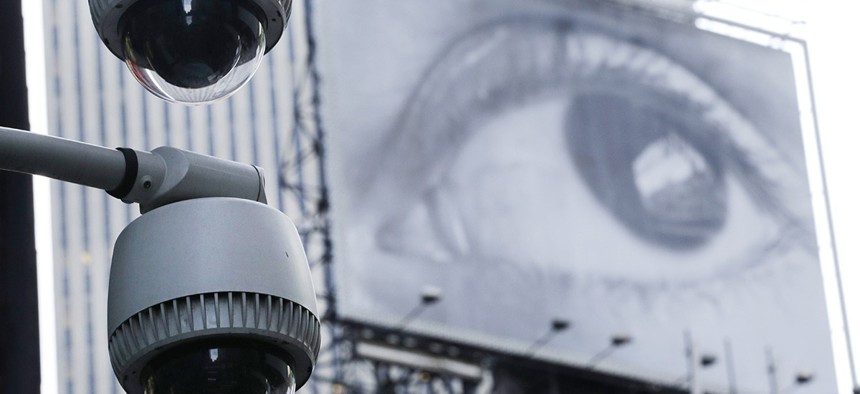Surveillance Cameras Will Soon Divine Your Personality from Eye Movements

Security cameras are mounted on the side of a building overlooking an intersection in midtown Manhattan. Mark Lennihan/AP File Photo
Machine-learning techniques promise to make biometric data far more useful for intelligence gathering.
Researchers have used artificial intelligence to show that very subtle eye movements, of the sort you might pick up with a camera, can divine aspects of personality much better than random guessing.
It’s another good example of how the wealth of biometric data that humans produce, once digitized and examined at large scale, can reveal hidden aspects of identity in ways that could be a boon to intelligence gathering.
The German and Australian researchers fitted 42 volunteers with eye-tracking headgear, and had them fill out the NEO Five-Factor Inventory, a personality test that measures traits such as neuroticism, extraversion, openness, agreeableness, and conscientiousness.
They then had the subjects go about a normal routine while they quietly collected eye movement data and then used machine learning to categorize the data.
“Thanks to the machine learning approach, we could automatically analyze a large set of eye movement characteristics and rank them by their importance for personality trait prediction. Going beyond characteristics investigated in earlier works, this approach also allowed us to identify new links between previously under-investigated eye movement characteristics and personality traits,” they write.
While the program didn’t predict personality perfectly, it did much better than random guessing in areas such as extraversion, agreeableness, and neuroticism, etc. Only in the area of curiosity and exploration did guessing work better. See the chart below for results.

The U.S. military has been looking for ways to use biometrics to authenticate individuals, rather than passwords that can be hacked, and to better collect intelligence on potential subjects in a way that is “non-permissive,” which really just means without the subject’s permission or attention.
But the intelligence community has become concerned about the growing amount of biometric data leakage that’s complicating efforts.






